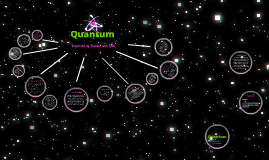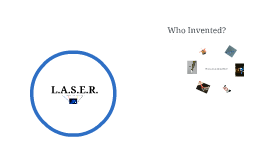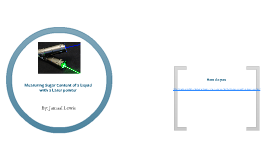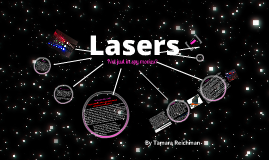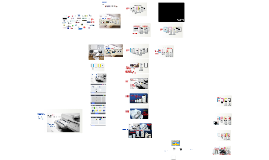Laser
Transcript: Not just in spy movies? By Tamara Reichman Lasers are amazing light beams powerful enough to zoom miles into the sky or cut through lumps of metal. Once seen only in science fiction, they have proved themselves to be among the most versatile inventions of modern times. The miniaturized laser beam that reads music in a CD player can also guide missiles, send emails down fiber-optic telephone lines, destroy dangerous tumours and scan goods at the supermarket checkout. "Laser" is an acronym for light amplification by stimulated emission of radiation, which describes how a laser works. http://www.explainthatstuff.com/lasers.html http://simple.wikipedia.org/wiki/Laser http://www.worldoflasers.com/laserhistory.htm http://en.wikipedia.org/wiki/Laser_pointer#Australia Application Lasers Where are lasers used? Lasers are more than just powerful flashlights. The difference between ordinary light and laser light is like the difference between ripples in your bathtub and huge waves on the sea. You've probably noticed that if you move your hands back and forth in the bathtub you can make quite strong waves. If you keep moving your hands in step with the waves you make, the waves get bigger and bigger. Imagine doing this a few million times in the open ocean. Before long, you'd have mountainous waves towering over your head! A good analogy... History 'Laser scanners use a laser beam as the light source and typically employ either a reciprocating mirror or a rotating prism to scan the laser beam back and forth across the bar code. As with the pen type reader, a photodiode is used to measure the intensity of the light reflected back from the bar code. In both pen readers and laser scanners, the light emitted by the reader is rapidly varied in brightness with a data pattern and the photodiode receive circuitry is designed to detect only signals with the same modulated pattern." - wikipedia article 'barcode scanner' "light amplification by stimulated emission of radiation" Albert Einstein was the first to put forward the idea of stimulated emission that could produce a laser. From that point many years were spent confirming the presence of the phenomenon, but it was not until 1959 that the term laser was coined by Gordon Gould in a research paper. The first working laser was put together and operated by Theodore Maiman at the Hughes Research Laboratories in 1960, using a solid ruby laser. 1917 - Albert Einstein first theorized about the process which makes lasers possible called "Stimulated Emission." 1954 - Charles Townes and Arthur Schawlow invented the maser (microwave amplification by stimulated emission of radiation), using ammonia gas and microwave radiation. The technology is very close but does not use a visible light. 1958 - Charles Townes and Arthur Schawlow theorized and published papers about a visible laser, an invention that would use infrared and/or visible spectrum light, however, they did not proceed with any research at the time. March 24, 1959 - Charles Townes and Arthur Schawlow were granted a patent for the maser. The maser was used to amplify radio signals and as an ultrasensitive detector for space research. 1960 - Theodore Maiman invented the ruby laser. It was considered to be the first successful optical or light laser. 1958 - Gordon Gould was the first person to use the word "laser". There is good reason to believe that Gordon Gould made the first light laser. Gould was a doctoral student at Columbia University under Charles Townes, the inventor of the maser. Gordon Gould was inspired to build his optical laser starting in 1958. He didn't file for a patent for his invention until 1959. As a result, Gordon Gould's patent was refused and his technology was exploited by others. It took until 1977 for Gordon Gould to finally win his patent war and receive his first patent for the laser. 1960 - The first gas laser (helium neon) was invented by Ali Javan. The gas laser was the first continuous-light laser and the first to operate "on the principle of converting electrical energy to a laser light output." 1962 - Robert Hall created a revolutionary type of laser that is still used in many of the electronic appliances and communications systems that we use every day. 2000 - Alferov and Kroemer were given the Nobel Prize for their development within the field of semiconductor physics, where they had studied the type of substances that was first used to build semiconductor lasers, that is, the kind of miniature lasers that today have become the cheapest, lightest and smallest. The idea is to produce both the light source and energy supply and place the mirrors in one crystal (less than 1 mm facet, with many sequences). This has become not only the basis for many cheap and portable appliances, but also the foundation in optical information networks. The CD player, laser writer, laser pointer and the bar code reader the cashier at the supermarket uses, are all based on their discovery. Because the laser light







